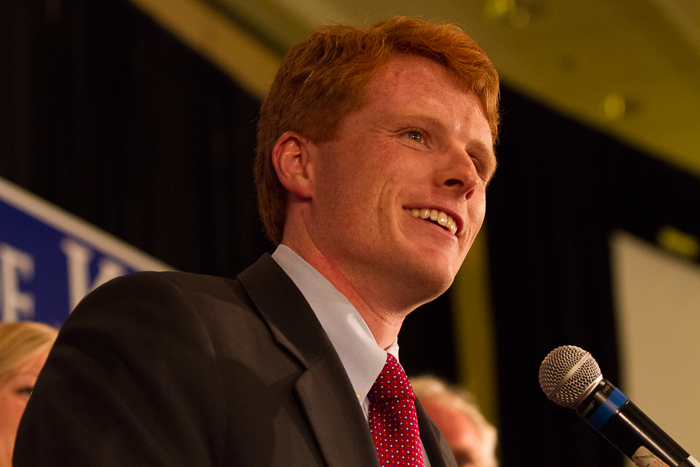Comics Lend New Meaning to Violence, War and Trauma
By Justine Hofherr
BU News Service
When Professor Hillary Chute first read Maus, a graphic novel depicting author Art Spiegelman’s father’s experience as a Polish Jew during the Holocaust, she realized comics could encompass much more than American superheroes like Spiderman and Batman.
“I was really surprised when I started looking at how many different kinds of stories about world historical conflicts were in the form of comics,” Chute said at a lecture entitled “Comics as Documentary: Words, Images, and War,” at Boston University’s Photonics building Thursday evening. “It struck me that the most complicated and interesting work were works about history and trauma to some extent.”
Chute encountered Maus in 2000 while taking a historical fiction class at Rutgers University, where she got her PhD in English in 2006. She never read comics as a child, she said, but Maus, the first graphic novel to win the Pulitzer Prize, made her realize the comic form opens doors for documenting acts of war, trauma and violence in ways that news articles and photos cannot.
The combination of graphic visual images and text in artificially constructed frames invites the reader to slow down, Chute said.
“I’ve always been interested in the intersection of history, narrative and memory,” Chute said. “Comics like Maus engage the reader in imagining the unimaginable.”
Maus, published in 1986, uses minimalist drawing style and postmodern techniques in pacing, structure and panel layouts, Chute said. Spiegelman also utilizes different types of animals to represent different human races, with mice representing Jews, cats representing Germans and pigs standing for non-Jewish Poles.
One page of Maus depicts a German Nazi cat in a Jewish ghetto gripping a Jewish mouse in one claw and forcing a gun down the mouse’s throat. The mouse narrating the events of WWII describes the ghettos, saying, “It was fences put up all around! No mouse could go out from the ghetto; No food and no medicine could go in!”
Chute said this jarring personification of mice forces the reader to see the Holocaust as a spectacle and commit the atrocities that occurred to memory.
Maus inspired Chute to bring the graphic novel into academia. Comics were long considered lowbrow, she said, but they are gaining greater esteem as teachers recognize that they often document historical truths in engaging ways.
Other groundbreaking graphic novels depicting war include “I Saw It: The Atomic Bombing of Hiroshima, A Survivor’s True Story” and “Barefoot Gen,” by Keiji Nakazawa, a survivor of the A-bomb. In these two manga comics, Chute said, Nakazawa recounts the bombing of Japan’s Hiroshima in gruesome detail, often depicting characters with flesh dripping off their arms and faces. “I Saw It” was published in 1972 and “Barefoot Gen” was published and serialized in 1973.
More recently, she said, comic journalist Joe Sacco has also paved the way for documentary-style graphic narratives with his novel, “Palestine,” which depicts Israeli-Palestinian relations in the West Bank and the Gaza Strip in December 1991 and January 1992.
“They opened the field for new content,” Chute said.
Hurricane Katrina, 9/11 and the Arab Spring uprisings, which began in Tunisia in 2010, are just a few of the other traumatic events that have inspired comic culture, Chute said.
English professor Davida Pines, who teaches a course dedicated to the graphic narrative at Boston University, attended the lecture to learn more about the significance of hand writing in comics. She said the act of writing in an age of high technology engages the reader.
“Handwriting is like a brushstroke,” Pines said. “It puts you so close to the artist.”
Like Chute, Pines has been fascinated with comics since she encountered Maus in graduate school at Brandeis University and said she wants graphic novels to be considered literature worth studying.
“Comics help us create a memory of something so deeply subjective,” Pines said.
Chute is working on her next book about comics as a form of documentary, which will look at the post-World War II environment in which Spiegelman in America and Nakazawa in Japan established comics as a form for addressing the cultural consequences of war. The book will also investigate current graphic reportage by figures such as Sacco on the Balkans and the Middle East.
Comics are around to stay, Chute said, and should not be limited to just one format—print or online.
“People are really interested in texts that contain multiple media,” Chute said. “Comics can be very appealing and instructive.”







